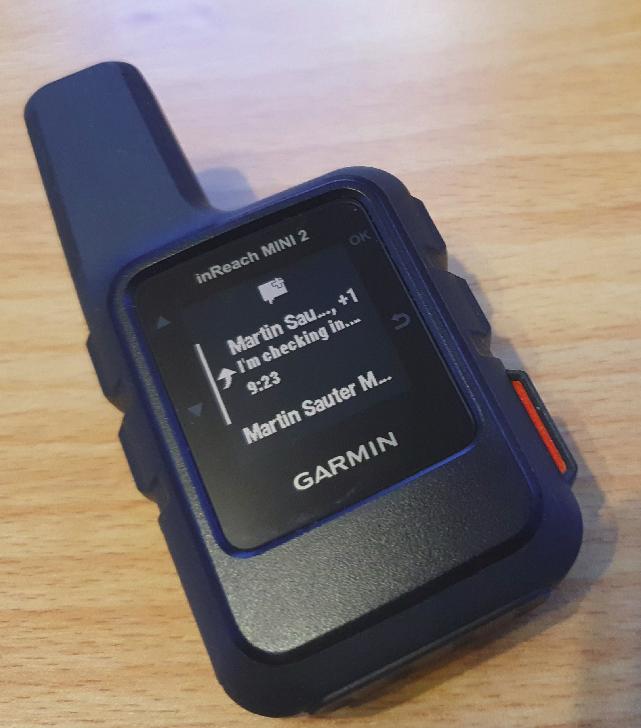
The times are getting stranger and stranger. Only a few years ago, I didn’t worry too much about scenarios which would prevent me from communicating with members of the household while any of us were traveling. But the world has changed massively in the past few years, and at least from a European point of view, I can no longer ignore scenarios of prolonged power and network outages. Whether that’s likely or not is hard to say but I can’t just shrug it off anymore. So I was looking for a way how I could keep in touch ‘when all else fails’.
My definition of ‘when all else fails’ is a prolonged power outage that will pretty quickly take down all networks in that area as well. Some parts might have a battery backup but that will only last for a short time. Also, wireless and fixed networks would certainly be overloaded during such a time. That kind of rules out any land based communication solutions.
Amateur radios sound like an exciting solution, but devices are large, bulky and not pocketable, at least not for international communication. And we are not even talking about the knowledge and experience of operating such equipment, and the license required for it. So definitely not an option.
Recently, Apple launched a new generation of their smartphones that support emergency communication over satellites. That sounded exciting at first, but currently, this is not for person to person communication, but only for sending one-way messages to emergency centers. That wouldn’t help me much, I want to be able to contact my household members. Also, even if it were for person to person communication, any blackout scenario would probably overload the satellite network in the area within a short amount of time, so a mass market solution wouldn’t work either.
So standalone satellite phones on a satellite network not used by mass market devices could have been an option. But devices and monthly subscriptions are very expensive. I was stuck at this point for a while, but I eventually discovered that satellite networks also offer text messaging services with dedicated devices. There are a number of such devices on the market and my eyes particularly fell on the Garmin InReach Mini 2, which uses the Iridium satellite network. Smaller than a smartphone and weighing only around 100 grams, there was suddenly a viable option for my use case in sight. The important point: The Mini 2 is only a text messenger, it does not have voice call capabilities. But for emergencies, that’s a viable tradeoff.
At 400 euros a piece, the device is still not cheap, but far cheaper than satellite phones. There are a number of subscription options and for my use case, the 15 euros a month option that includes unlimited outgoing predefined messages and 10 standard 160 character messages is also in a range I’m willing to pay. Additional outgoing or incoming standard messages are then billed at around 50 euro cents per message. Not cheap, but when all else fails, I guess one sees the prices from a different point of view. Iridium uses satellite to satellite communication, and there are only 4 ground stations in the world. One in Norway, two in North America and one in South America. In other words, power outages even of a whole country will have no effect on the service.
So how does the InReach satellite text message service work? I had a look at a couple of videos on Youtube which answered some but not all of my questions. But it was enough information to make the decision to buy two of them and have a look myself. Long story short, the devices do exactly what I want and they do work in cities in places where you can see a portion of the sky and the horizon. In practice that means larger squares, behind windows without heating insulation in the upper stories of buildings, and, of course, rooftops with a 360 degrees view of the sky and horizon. With some patience, the service even works at street level. Depending on the location, a message is sent within a minute or two, but it can also take quite a while longer or not work at all for some time, even in places from which a good portion of the sky is visible. After sending a message, the device keeps waiting for a response message from the recipient(s) for 10 minutes. After that, it returns to deep power save state and only checks once an hour for waiting messages unless the user triggers a message check.
Also important: A message can be sent to many recipients at once, which can be other InReach users, mobile phone numbers and eMail addresses. This way, if the recipient is in a place where the Internet and mobile networks are working, message delivery is very quick. Apart from another InReach device, it’s also possible to respond via SMS or a web interface to incoming messages. In the case of SMS messages, InReach uses a national mobile number as originator, so SMS messages recipients return are free of charge for them and only charged to the owner of the InReach device to which they are delivered.
So much for a quick overview. What I have completely ignored so far are the navigation, mapping and emergency center communication capabilities of the device, as these features are not relevant for my use case. Over the past weeks, however, I’ve had a very detailed look at how the communication part of the device works and its limitations. It will take me a couple of blog entries to go through them, so stay tuned. Next up: How to activate a device once you have it in your hands.